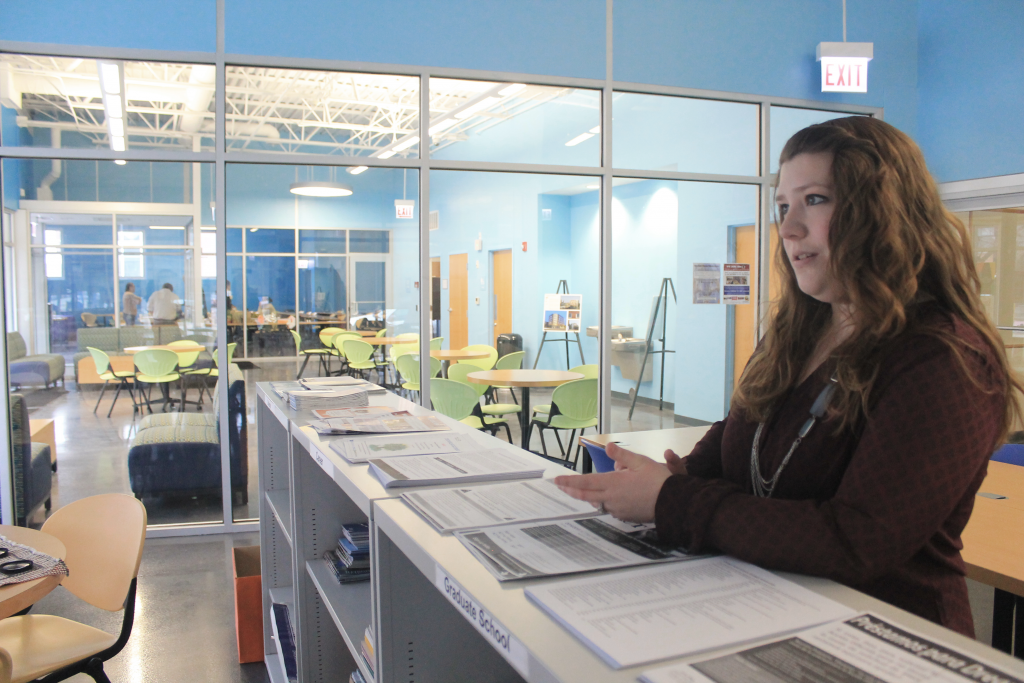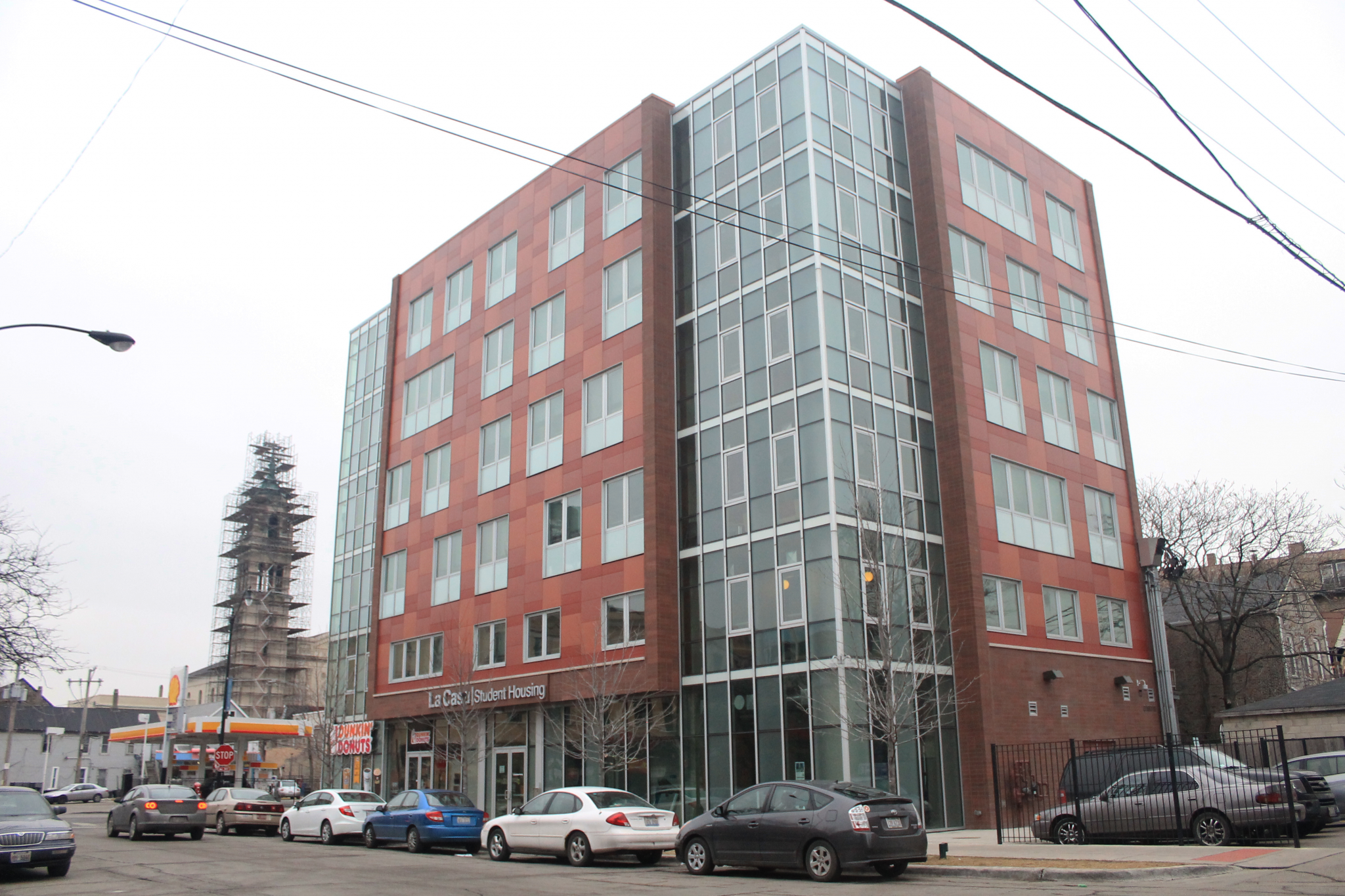La Casa Student Housing stands at the corner of 18th Street and Paulina, a six-story building that seems even taller next to the short tiendas and houses nearby. Here, at the edge of Pilsen’s zócalo, across from the old St. Vitus’ Catholic Church, this building supports a carefully formed community.
La Casa is home to about eighty-five students who study at over twenty-five different universities in Chicago, according to Angela Crawford, the project’s Outreach Representative. La Casa’s diverse student population, in combination with its affordable price and extensive resource center, make this student housing project unique, possibly the only one of its kind in America.
“La Casa is a community of students from different universities all across Chicago, and all of the students come from different places, come from different types of families, are studying different things and going to different schools, but they all have one goal—to get their first bachelor’s degree,” Crawford said. “And that’s what unites everybody here, and what keeps all these students on the path to graduation.”
La Casa is an extension of The Resurrection Project (TRP), a Pilsen-based organization that promotes community development in Pilsen, Little Village, and Back of The Yards through housing, health, and education programs. The student housing center, which opened in 2012, was conceptualized over ten years ago, Crawford said, when founding members of TRP realized the demand for education resources in the community.
“We realized that there was a need in Pilsen for students to know how to go to college. Students just didn’t know, students weren’t going or they were starting and not completing the process,” Crawford said. “So college knowledge was necessary.”
There was also a need for students to live in an environment that supports their academics. “One of the founders of the organization was talking to students and said, ‘Well, what’s your average day like? Where do you study when you get home from school, how do you study?’” Crawford remembered. “And this student’s response was ‘Well, I study in the bathroom at 2am once everybody’s gone to sleep.’”
Even in the best of situations, Crawford said, students who lived at home with their families weren’t afforded the same opportunities as students in college housing. Particularly, they missed out on the chance to live and work with their peers.
“It was really the realization that what was happening a generation ago was still happening now,” Crawford explained. “Students are still commuting to one of the colleges downtown and not necessarily networking and living with people.”
Two years ago, Claudia Martinez, a senior at UIC and resident of La Casa, found herself in just that situation, riding the train for over an hour and a half every morning and evening as she commuted between school and her home in the suburb of Carpentersville. Between her classes and her extracurriculars, the schedule was exhausting. Living in UIC’s dorms wasn’t an option either, though she had done so for her first two years of college.
“The one reason I stopped living at the dorms was because it was way too expensive. I found myself having to take out too many loans—not only myself, my parents also had to take out loans—to cover the living expenses on campus,” Martinez explained. “La Casa was just way more affordable.”
At La Casa, Martinez gets her room for free, in exchange for her work as TRP’s Marketing Intern. The established rate is just under $700 a month for housing in a double room and utilities, though many students with financial needs receive scholarships. This price, Crawford conceded, may be more or less expensive than apartments in the area, depending on how comfortable they are—the monthly rent for a 2-bedroom apartment in Pilsen can range from $1,000 to $2,600. However, La Casa is generally more affordable than most university dorm rates—for example, UIC’s price hovers around $1,000 a month for room and board.
But now that she lives here, Martinez’s favorite thing about La Casa isn’t the price—it’s the people.
“La Casa does not only serve as a place to live,” Martinez said, “It’s not just a college dorm, it’s more like a community of students who are all here for the same reason.”
La Casa builds community among its students through its ten-person apartment-style suites, equipped with communal kitchens and living areas. The design of the suites has a modern industrial feel, both functional and comfortable, mixing exposed ceilings and bare concrete walls with swaths of vibrant pastel and neon colors. Here, students live and work together, with the support of a graduate student RA on each floor.
The resource center next door also provides support and counsel for students through a host of programs and activities, from movie nights and study breaks to FAFSA workshops and “skill-builder” nights, where students learn career skills like résumé-writing. Another program brings in professionals from the Pilsen community to talk to students about their different fields.
“The goal here is to get our students thinking about certain topics, but it’s also to introduce them to people in the community to build their network, [to ask] ‘How did you do it? How did you get to where you are?’” Crawford said.

La Casa also hosts programs for non-residents, such as college information sessions for local high school students and their families. Most of these programs are held in both English and Spanish. Eventually, Crawford hopes that La Casa and its resource center will be a “one-stop shop” for all things college, available to both students and the entire surrounding community.
For now, Crawford said, the primary objective of their program is to help graduate their students, many of whom, like Martinez, are the first in their families to attend college.
“As a recent college grad and as a first-generation college student, from my own family background, I’m helping students who are similar to myself,” Crawford said. “I love being around the students and supporting the students in ways that I thought I needed support in when I was working toward my degree.”
Martinez is set to graduate from UIC this year with a degree in marketing. She agrees with Crawford that living at La Casa has changed her life, from the people she’s met to the real-life experience she’s gained through her internship.
“In the dorms where I was living before, you just go there to sleep,” Martinez said. “But La Casa is like the whole experience. They help you so much.”

